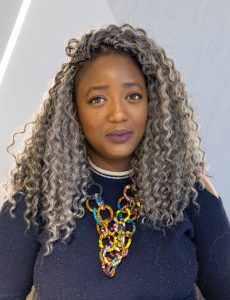 “DOING A LOT WITH A LITTLE”
“DOING A LOT WITH A LITTLE”
Blog by Soma Dasgupta, SI Calcutta
As one whose fascination with numbers increased exponentially from childhood, I was thrilled to know that Dr Imafidon, a young proponent of the theory of numbers had been selected to speak to us. Her scholastic experiences will definitely shine a torch to the younger and more aspiring members of our organisation, I thought.
This is how the Wikipedia defined her. Anne-Marie Osawemwenze Ore-Ofe Imafidon MBE Hon FREng is a British computing, mathematics and language child prodigy. She is described as one of the youngest to pass two GCSEs in two different subjects while in primary school, a feat few can even dream of grasping. Dr Imafidon graduated from high school at age 10. In 2003, when she was only 13, she received a British scholarship to study mathematics at Johns Hopkins University, in the US. And at 17, she began her Master’s Degree from Oxford University. Anne Marie, it also said ,was a “serial world record breaker” in higher education.
There are several other pips she collected like the Honorary Doctorates from a number of UK Universities as well as an Honorary Fellowship at Keble College, Oxford to add to her cv. When the world was battling the pandemic, Anne Marie at 31, won the Suffrage Science Award.
What a phenomenal set of achievements!
Anne Marie’s working life has been equally exceptional. She was employed briefly by Goldman Sachs, Hewlett Packard and Deutsche Bank, before launching a social enterprise called Stemettes in 2013. Here she championed the cause of women in STEM, ‘built on a dream of fairness in scientific knowledge dispensation’ to encourage girls to study Science, Technology, Engineering and Maths. Since its inception 8 years ago, it has exposed more than 50,000 girls across Europe to STEM.
Anne Marie has since been invited to give talks at various fora and share her experiences.
As the keynote speaker at SIGBI Annual Conference today, I therefore awaited her talk with huge expectations.
Young Anne Marie looked charmingly attractive. With a mass of silver hued curly hair cascading down her crown, bright eyes and a dazzling smile, she won my heart. Her printed dress and a neck piece, where the pendant was a silvery spanner, she made a statement -Science and technology are my signature but charm is my inspiration.
She began with photos of her childhood in her East London home. She went to a school close by, where she was a relentless quick learner and a prodigious one to boot. The school could not keep pace with her. If school was monotonous, she used it to her advantage by teaching her mates, who needed help.
She had immense curiosity about the world. How do things work, she wondered? Can we change them or improve upon them? It was just the beginning. All along these questions drove her to gather more knowledge and more ideas. If the internet had great political and economic implications, for example, she wondered, how could its usage be expanded.
Similarly researching about who were the scientists and technologists behind the inventions, she said, the pattern was annoyingly dull; it was always male and white. Yet if one were to delve deeper, one would find there were numerous females and non-whites too, who were never ever included in any list, she said. She presented several pictures of females who had many inventions to their credit, but were not mentioned. For example, how many people knew the glamorous Hollywood actress Hedy Lamarr was responsible for several advances in communication technology in the 1940s, which eventually lead to the creation of Wi-Fi, GPS, and Bluetooth. Lamarr got neither payment nor recognition for her findings. There were several others who have not emblazoned the sky but whose scientific contributions have been significant.
This discrimination is apparent even in the product design area as well. Car safety belts are so fashioned, that they serve the male body. Research shows that more females suffer grievous injuries than males in car crashes, because their small statures prevent them from getting complete safety from the ill designed seat belts.
Differentiation has not helped the community to progress uniformly – rather it has led to slowed and sectional growth, she claimed. It is important therefore to build a vision for us for 10-15 years down the line, so that we could work towards it, emphasizing that age, gender or disability should never constrain achievements. Anne-Marie’s vision was for a more diverse and balanced science and technologically equipped community.
Anne Marie also stressed on start-ups. Build, measure and iterate on issues that Soroptimists support, she suggested to her listeners.
Here she once again pointed to the significant contribution of STEM education to the social stability in a community. Drawing the imagery of the equity movement, she said women needed equity and not just equality. What is essential is power balance, with redistribution of power. And as she ended, she reiterated, what ‘has been’ needs to be challenged to aspire for a newer balance of power. Redistribute power, she urged. If women go together, they can go farther.
At the end of this thought-provoking talk, there were predictably several interesting questions. One highly pertinent question was what can Soroptimists do to remove the obstacles to entry of girls into STEM. Anne Marie was forthright. Counter the narration that women cannot do it. Challenge the beliefs that are discriminatory and change will come. Small actions can bring big differences. Personally, it resonated strongly with me. World’s biggest disparity is between genders and not classes. The gap of genders is due to our thinking. Change it through STEM education. A small change can lead to big results.
About the speaker:
At the age of 11 Dr Anne-Marie passed her Computing A-Level. By 20 she was one of the youngest ever to receive a Masters Degree in Mathematics and Computer Science from the University of Oxford.
Today she is a keynote speaker, presenter and co-founder of the award-winning social enterprise, Stemettes.
A recognised and respected thought-leader in the tech space and trustee at the Institute for the Future of Work, Anne-Marie has spoken across the globe for some of the world’s biggest digital companies and conferences, including Facebook, ASOS, Google, SXSW and Founders Forum.
She regularly appears in international media and is a sought-after presenter and conference facilitator. In addition to hosting the highly popular Women Tech Charge podcast for the Evening Standard, Anne-Marie featured on the 2019 Royal Institute Christmas Lectures and has conducted live interviews with famous faces from the tech world and beyond, including Jack Dorsey, Rachel Riley and Lewis Hamilton.
Voted the most influential woman in tech in the UK of 2020 by Computer Weekly and featured among the top 10 BAME leaders in tech by the Financial Times and Inclusive Boards, Anne-Marie was also the recipient of the prestigious Barclays UK ‘Woman of the Year’ award in 2018.
In recognition of her significant influence and achievements, Anne-Marie was awarded an MBE in the 2017 New Year’s Honours for services to young women and STEM sectors. In June of the same year she was also made an Honorary Fellow at Keble College, Oxford.

